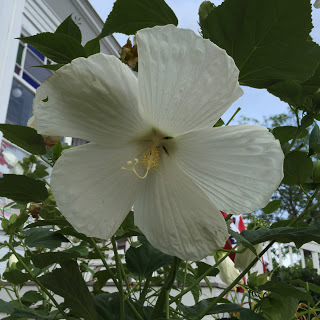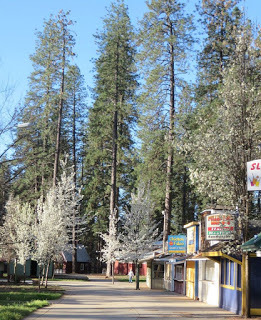Marcia Thornton Jones's Blog, page 166
August 5, 2015
Time to Imagine - August Theme by Deborah Lytton
August 4, 2015
Goodbye for Now
Okay, now that that's settled, I'll get back to the matter at hand. Our theme this month is celebrations and breaks, and that's what I need to do: take a break from Smack Dab. (Sniff!). It's been great for me to have a deadline each month and a theme or topic. It has made me examine my own work and process, and learn from the other bloggers. But, this fall I will be going back to work as a school librarian. I don't want the Smack Dab deadline to become a burden as I try to juggle all my repsonsibilities. I want to be able to enjoy this blog. So, I am going to bow out for now. I hope to come back some day, but I will certainly be reading and enjoying the wisdom of my fellow Smack Dab bloggers. Thank you for letting me be a part of this great group!
August 3, 2015
How to Celebrate Our Writing Successes by Irene Latham
 Confession: I have a hard time celebrating my writing successes. I'm constantly looking forward to the next thing instead of sitting comfortably with the current thing.
Confession: I have a hard time celebrating my writing successes. I'm constantly looking forward to the next thing instead of sitting comfortably with the current thing.I guess it's because success scares me. I don't like the attention -- I'd much rather talk about you than talk about me.
But it's important to recognize our achievements, whether they are meeting the daily word count, placing in a writing contest, getting a starred review. So much of this writing gig is beyond our control. What happens to the words after we put them on paper is really out of our hands. Which makes it all that more important to take a moment to recognize first our part (words on the page) and then dwell in gratitude for all the wondrous things that happen, like fan letters and speaking invitations and new printings and five-star reviews and awards lists. What bounty! What amazing gifts!
One habit I've developed to help me celebrate on a daily basis is to record in my morning pages 3 things from the previous day I'm grateful for.
On today's list:
1. Unexpected quiet time to write.
2. Wise feedback from [friend] on new pb manuscript.
3. Finishing poem for Summer Poem Swap.
Just writing these things down is a celebration, a way to stay grounded in the process and practice of writing. And every now and then, I treat myself to a Birthday Cake shake from Zaxby's. :)

August 2, 2015
Duct Tape, Chocolate, and Walter White By Ann Haywood Leal
Write two words.
Get distracted by something shiny.
Two more words.
Write three more.
 Sneak peek out the window.
Sneak peek out the window.Stop. Sniff the air. Is that charcoal with a hint of cheeseburger?
Lean closer to the window.
Shut the window and duct tape yourself to your chair.
Five more words.
Write eight more.
Is that a sentence you see?
Give the sentence a friend or two.
Don’t stop now.
 You have a page.
You have a page.The window has darkened. The charcoal is gray.
But you’ve done the work.
 Now celebrate.
Now celebrate.Unpeel the duct tape.
Eat some
chocolate.
See what Walter White is up to.
Sleep.
Wake up and repeat.
August 1, 2015
SMACK DAB NEWS
From the publisher (Scholastic):
 MILITARY ANIMALS showcases the most heroic animal stories throughout history where real animals saved the day!
MILITARY ANIMALS showcases the most heroic animal stories throughout history where real animals saved the day!Everyone knows that soldiers entered battlefields on horseback, but did you know that some warriors rode elephants into combat? You may have heard of bomb-sniffing dogs, but what about bomb-sniffing honeybees?
In MILITARY ANIMALS, you will learn all about these incredible animals that have aided the military in the air, on land, and by sea. Discover how dolphins, bears, pigs, penguins, and even glowworms became heroes in times of war. When technology couldn't help, these amazing animals could! Militaries around the world and throughout history have used animals to complete challenging missions. MILITARY ANIMALS will feature these true, hard-to-believe heroic animal stories, accompanied by action-packed photos.
July 30, 2015
Three Tips for a Killer Setting by Tracy Holczer
 Treat StreetBut the real reason we go is for the Nevada County Fair. Nestled amongst the cedars and pines, it is the kind of county fair you read about in books. Animal shows, big trucks, Clydesdales and the Northern California famous Treat Street with every imaginable carnival delicacy that exists. Homemade corn dogs, funnel cakes, baked potatoes, tempura and Carmel apples just to name a few. Sure, we ride the zipper and the giant Ferris wheel and throw things for prizes, but mostly we eat all day because everywhere you go, it smells like popcorn.
Treat StreetBut the real reason we go is for the Nevada County Fair. Nestled amongst the cedars and pines, it is the kind of county fair you read about in books. Animal shows, big trucks, Clydesdales and the Northern California famous Treat Street with every imaginable carnival delicacy that exists. Homemade corn dogs, funnel cakes, baked potatoes, tempura and Carmel apples just to name a few. Sure, we ride the zipper and the giant Ferris wheel and throw things for prizes, but mostly we eat all day because everywhere you go, it smells like popcorn.
 Clydesdales
Clydesdales The Zipper
The ZipperAll photos courtesy of the Nevada
County Fair Facebook pageTo me, setting is a beloved character. The Nevada County Fair is part of my childhood. It's existence, and my attendance, helped inform part of who I am. Setting isn't just a collection of details, it's the stitching on a quilt that holds everything together. Setting is the creation of mood, the idea that life is going on all around the story, and it gives a sense of completeness.
Three Tips for a Killer Setting:
1. Use the weather. Weather isn't just rain, snow and sun. There is fog, thunder and lightening, hail, high winds or dead calm. Think about the ways in which the weather affects not only the character's mood, but the mood of the plants and animals around her/him. Or the parents, teachers, store clerks, etc. High winds are good for sailing and kiting, bad for spreading fires or beach days. Think of everything you can do with weather.
2. Restrain yourself. Only use details of setting that are relevant to the story as it pertains to the character's inner or external arc. My new story is set in an apartment complex, a place where people are always coming and going. And one of the main obstacles the character is dealing with is her unwillingness to move on. She's clinging to the past.
3. Don't ignore Writing Instincts. I had no idea about the above connection until later drafts. I think setting is one of those things that will unfold naturally if you let yourself sit back inside your character and take a look around. What do they notice? Why? Chances are this is relevant to who they are and what challenges they face.
Make every word count!
July 29, 2015
Setting Enthusiasts Welcome by Jen Cervantes
When I saw this topic, I went back through old manuscripts to find that I spend A LOT of time on setting as seen in the partial opening of a recent ms below:

The town of San Bosco sits on the edge of a river whose sparkling purple and green stones are so bright beneath the water they look like they’ve been dipped in melted crayon. On the other side of town is an arroyo whittled away by rain, wind, and time, so wide it looks as if the earth is yawning. Some people say they can even hear mysterious sighs coming from the steep gully once all the water is gone.
In town, there are narrow crooked alleys that often lead to dark places and dead ends. But the brightly painted houses practically smile at passersby and are stacked so close together you could lean out your window and touch your neighbor’s house without having to stretch. The cobblestone streets are uneven and make you feel a little off balance unless you’re from here and in that case you’d have strong ankles and walk with a lean.
Setting can be an important tool to
1. set the mood
2. develop characters
3. show time and place
4. foreshadow events
This list goes on which is why I am a self-professed setting enthusiast. It is so rich with possibility!
July 26, 2015
Um, Yeah...Setting. (July Theme) by Olugbemisola Rhuday-Perkovich
I actually cheered out loud when I read Claudia's "heretical claim". I don't think really think much about setting when I'm writing, except to remember "Oh yeah! I need to do some setting stuff -- people like that!" I'm always surprised when someone says they get a sense of place from something I've written. When I teach, I tell writers to employ all of the 5 senses (plus memory) to add detail, and in thinking about this post, I did realize that I do write "setting" -- it comes from what my characters see, hear, taste, smell, touch, and remember. So while they may not pay attention to rolling green hills, rows of brownstones, or think much about how sunny it is, they do notice:
the girl in the red shirt who is trying to eat ice cream and go down the slide at the same time.
Or the fluffy gray cat darting between parked Mini Coopers on the street.
The lady with the ginormous white straw hat with a droopy flower who's sitting in the front row at church.
They might screw up their noses when they walk into the playground bathroom;
or wish they could drink in the bright blue-green ocean water -- and then spit and sputter when they do.
The beat of the old-school songs playing at the block party pumps through their bodies, and they giggle at Uncle Gary in his shorts and socks with sandals when he jumps up, yelling "That's my JAM!", and waves his hands in the air like he really, really doesn't care.
So, I suppose I get to setting through my characters. Does it work? I think so, for the most part. But yeah, sometimes I have to go back and add a few rolling green hills in revision.
That's how it goes.
July 25, 2015
THREE REASONS TO PLACE YOUR BOOK IN A FICTIONAL SETTING (HOLLY SCHINDLER)
I’ve published books with both real settings (New York / Queens; Peculiar, Missouri; Fair Grove, Missouri; my hometown of Springfield, Missouri, Lake of the Woods, Minnesota) and fictional cities (“Willow Springs” Missouri). Even in my real settings, though, I take plenty of liberties—especially in my YA, FERAL, in which I completely fictionalized the town of Peculiar, Missouri. (I just had to use that name!)
While many authors gravitate toward setting their books in regions or cities that they’re familiar with, I’ve discovered some definite advantages to placing my work in fictional cities:
1. You don’t get mired in research. As I said, many authors prefer to write about locations they’re already familiar with—but if it’s a new-to-you location, or if you’re writing about a different time period, you can get lost in learning the details—which streets intersected, which businesses were present, names of schools, etc. It can take some serious time away from actually getting your writing on the page.
2. Your town becomes a character. If you aren’t relying on what already is, you have to craft your town or location just as you would a main character. This can help add a new, often metaphorical dimension to your novel as well.
3. Your reader isn’t pulled out of the story. If you pick a real location, you’re bound to have readers who live in (or are well-versed with) the area where your book takes place. Bloggers and reviewers always mention the spots in which my own fictional world deviates from the real world when I pick actual cities for my novels. But if your location is fictional, your readers will be immersed in the story only, and won’t be comparing your own setting to the city they know.
How about you? What’s your preference as a reader or a writer? Fictional locations or real ones?
July 22, 2015
The Best of Smack-Dab-in-the-Classroom: Fan Fiction, by Dia Calhoun
In middle school I was not only a voracious reader, I also a wrote fan fiction before there was a name for it. I loved the Little House on the Prairie books. But alas, there were only nine in the series. After devouring them all many times, I wanted to stay in that world. So I made up stories starring me as Laura. I didn’t just “retell” Wilder’s stories, I made up new ones.
A few year later, my imagination intrigued b Star Trek, I made up stories around that series, too. Sometimes I was the captain. Sometimes the science officer—a female Vulcan.
I firmly believe that my imaginative extrapolations of existing stories was part of what led me to becoming an author—of original stories! believe that kids today should be encouraged to do the same—write stories based on books they love.
But there is so much concern today about “plagiarism.” But consider music. Music has a long history of composers who wrote variations on the themes of other composers. This from Wikipedia:
“Many classical and later composers have written compositions in the form of variations on a theme by another composer . . . .Many of these works are called simply "Variations on a Theme of/by ...". Other works, which often involve substantial development or transformation of the base material, may have more fanciful titles such as Caprice, Fantasy, Paraphrase, Reminiscences, Rhapsody, etc.”
http://en.wikipedia.org/wiki/List_of_variations_on_a_theme_by_another_composer
Fan fiction is not plagiarism. It is a point of departure for imagination and creative exercise. If this is made clear to kids, it is a wonderful way to get them started writing stories—especially kids who might not otherwise. If they can write a story based on one they’re already excited about, half the battle is won.
And who knows where that might lead? I would be honored if some kid started on the road to being an author by writing about Eckhart from my book After the River the Sun, or Eva from Eva of the Farm. Honored if my work could do for someone else what Laura Ingalls Wilder’s work did for me.
You can learn more about Dia Calhoun at www.diacalhoun.com



